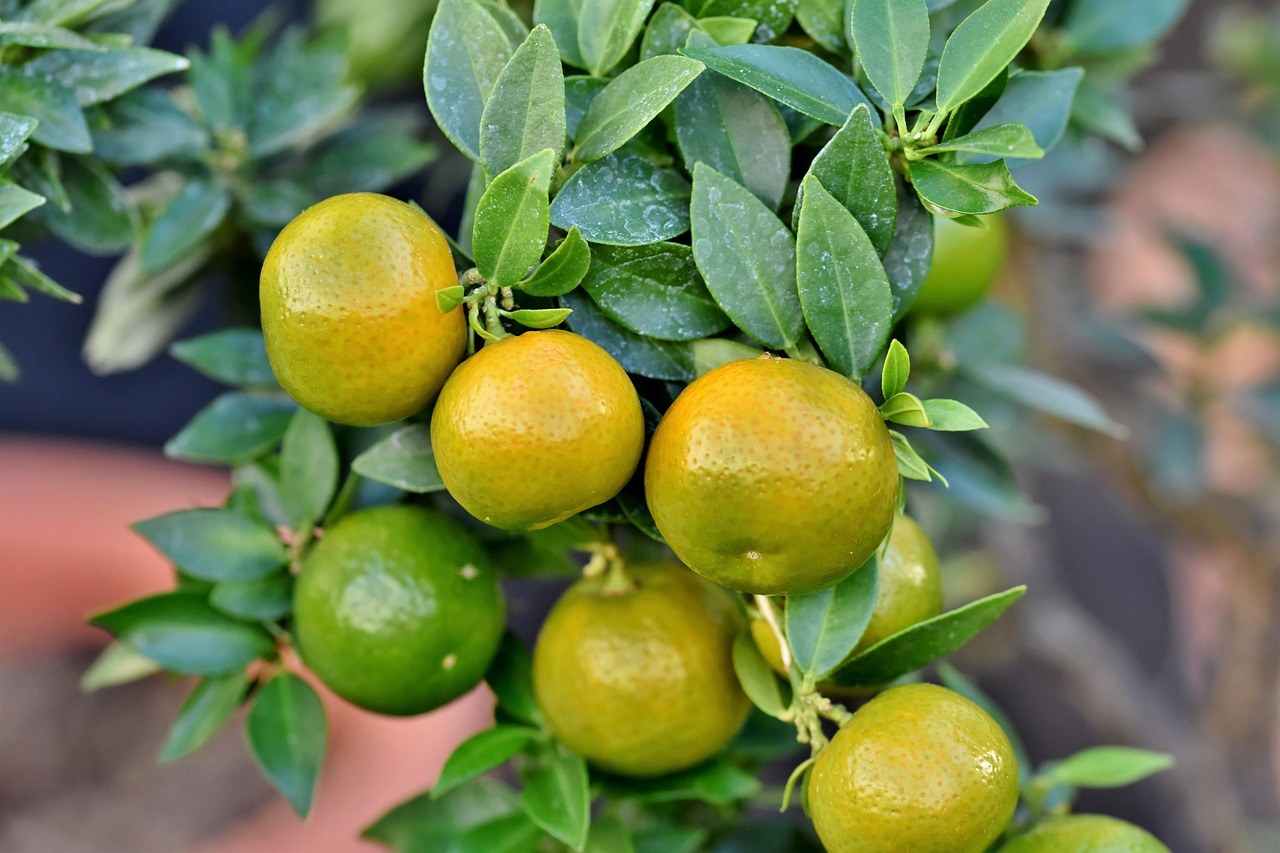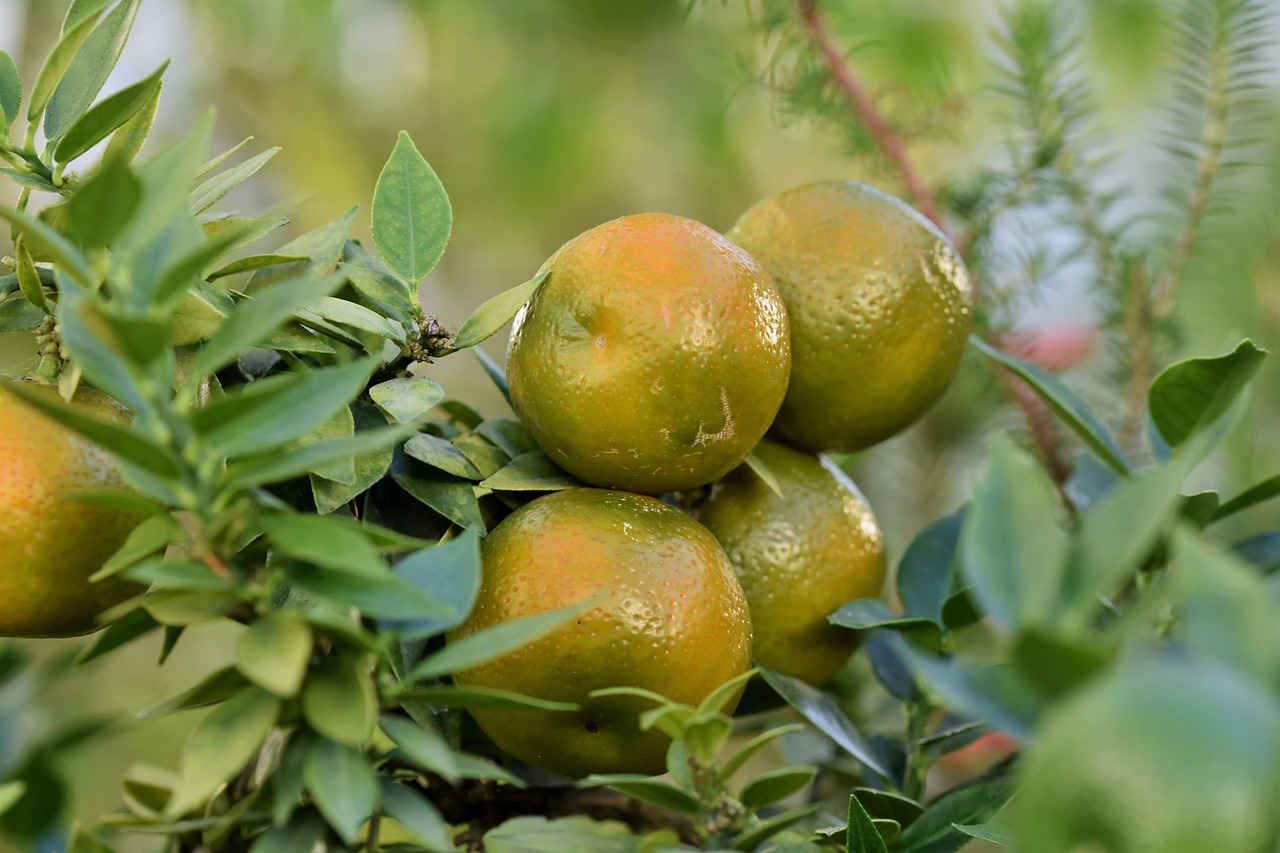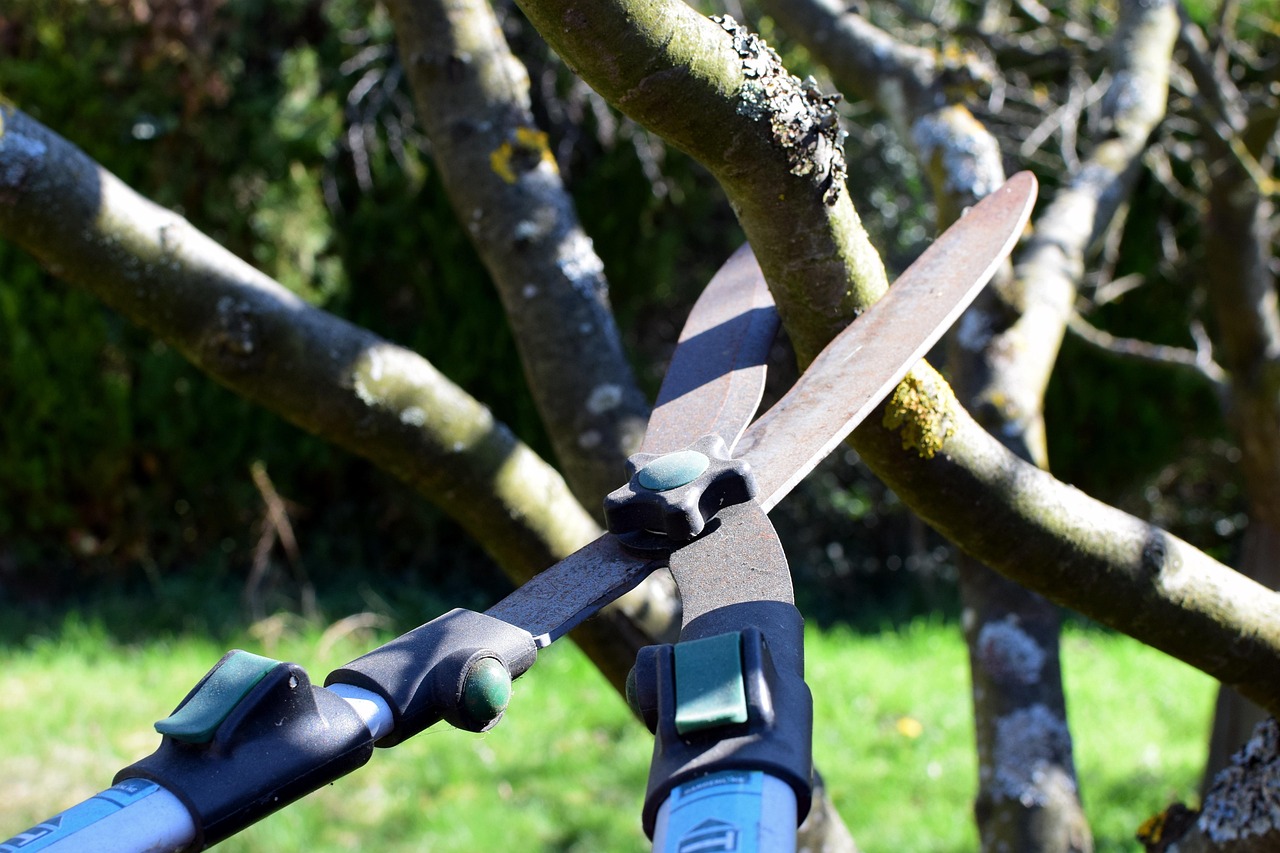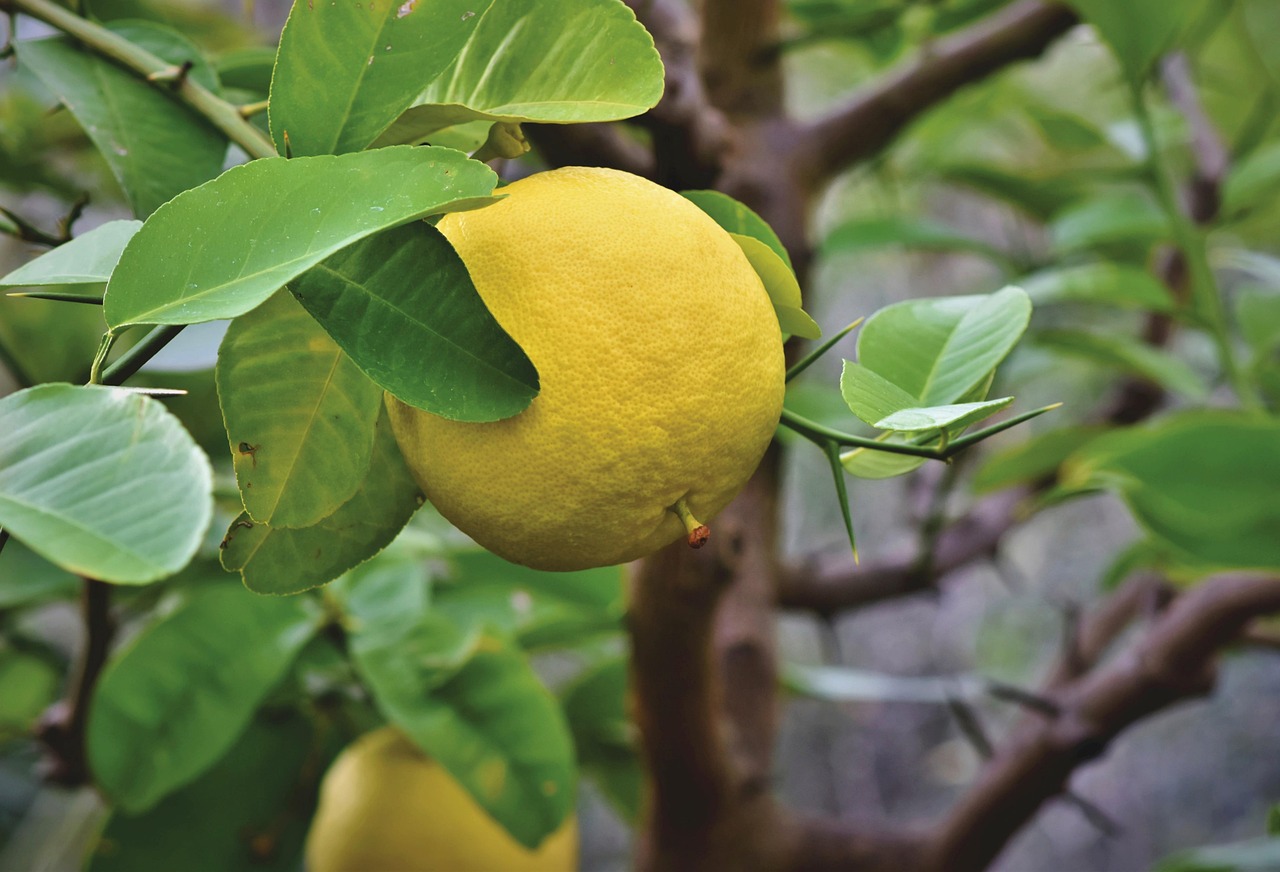To improve the fruit harvest of your grapefruit tree, prune it during the dormant season. Focus on removing dead or diseased branches, thinning out crowded areas, and shaping the tree for better sunlight exposure and air circulation.
Grapefruit trees can be a delightful addition to any garden. They offer not only beautiful blooms but also delicious fruit. However, maintaining the health and productivity of these trees requires attention to detail, especially when it comes to pruning. Proper pruning encourages better air circulation, enhances sunlight penetration, and ultimately leads to a more fruitful harvest.

Understanding how to effectively prune your grapefruit tree is essential. Grapefruit trees grow vigorously, and without regular pruning, they can become overgrown. This overgrowth can lead to poor fruit quality and increased susceptibility to diseases. Therefore, knowing the right techniques and timing can make a significant difference in the yield of your grapefruit tree.
Understanding Grapefruit Tree Growth
Grapefruit trees belong to the citrus family and are known for their robust growth habits. Typically, they can reach heights of up to 20 feet if left unpruned. Their branches tend to grow densely, which may inhibit fruit formation if not managed properly. The importance of pruning cannot be overstated, as it helps maintain a manageable size and encourages healthy growth.
There are several factors that influence the growth of grapefruit trees. These include soil quality, water availability, sunlight exposure, and climate conditions. Proper management of these factors, combined with effective pruning practices, will yield the best results.

When to Prune Your Grapefruit Tree
The ideal time for pruning grapefruit trees is during their dormant period. This generally occurs in late winter to early spring before new growth begins. Pruning during dormancy minimizes stress on the tree and reduces the risk of injury from frost. Additionally, this timing allows you to assess the structure of the tree without the distraction of foliage.
It is important to monitor local weather conditions as well. In warmer climates, grapefruit trees may not experience a pronounced dormant phase. In such cases, pruning can take place after the last frost date. This ensures that any potential damage from cold weather is avoided.
Essential Pruning Techniques
Effective pruning involves several techniques that can be applied to your grapefruit tree. Each technique serves a specific purpose aimed at enhancing growth and fruit production.

- Thinning: Remove crowded branches to improve air circulation and light penetration.
- Shaping: Prune the tree to maintain a desirable shape that promotes even growth.
- Crown Reduction: Reduce the height of the tree by cutting back tall branches.
- Deadwooding: Remove dead or diseased branches to prevent the spread of pests and diseases.
Utilizing these techniques appropriately will ensure that your grapefruit tree remains healthy and productive throughout its life cycle.
Tools Needed for Pruning
Having the right tools for pruning is crucial for achieving clean cuts and minimizing damage to your tree. Below is a list of essential tools you will need:
| Tool | Description |
|---|---|
| Hand Pruners | Ideal for small branches up to ¾ inch in diameter. |
| Loppers | Best for branches between ¾ inch and 1½ inches thick. |
| Saw | A pruning saw is necessary for larger branches over 1½ inches thick. |
| Gloves | Protect your hands from thorns and rough bark during pruning. |
Using these tools will help you achieve effective results while maintaining safety during the pruning process.

Post-Pruning Care
After pruning your grapefruit tree, it is essential to provide proper care to ensure it thrives. Watering is crucial, especially during dry spells following pruning. Ensure that your tree receives adequate moisture without overwatering. Additionally, applying mulch around the base can help retain moisture and suppress weeds.
Fertilizing your grapefruit tree after pruning can also promote vigorous growth. Use a balanced fertilizer formulated for citrus trees to provide essential nutrients. Follow the manufacturer’s instructions for application rates and timing.
Regular monitoring for pests and diseases should continue after pruning as well. Early detection will allow for prompt action, ensuring the health of your grapefruit tree remains intact.
Common Mistakes to Avoid When Pruning Grapefruit Trees
While pruning is essential for the health and productivity of grapefruit trees, there are common mistakes that many gardeners make. Avoiding these pitfalls can lead to a more successful pruning experience and a healthier tree.
- Pruning at the Wrong Time: Pruning during active growth can stress the tree and reduce fruit production. Always wait until the dormant season.
- Over-Pruning: Removing too many branches can hinder fruit production. Aim to remove no more than 20-30% of the tree’s canopy in a single season.
- Neglecting Tools: Using dull or dirty tools can lead to ragged cuts and increase the risk of disease. Always ensure your tools are sharp and clean before use.
- Ignoring Tree Structure: Pruning without regard to the tree’s natural shape can lead to an unbalanced appearance and poor growth patterns. Maintain the natural structure as much as possible.
- Failing to Clean Up: Leaving cuttings and debris around the base of the tree can attract pests and diseases. Always clean up after pruning.
Signs Your Grapefruit Tree Needs Pruning
Understanding when your grapefruit tree needs pruning is key to its health and productivity. Here are several signs that indicate it may be time to prune:
- Overgrown Branches: If branches are encroaching on pathways or other plants, it’s time to prune.
- Poor Air Circulation: If the interior of the tree appears dense, thinning is necessary to improve airflow.
- Dead or Diseased Wood: Any signs of dead branches or diseases warrant immediate removal to protect the healthy parts of the tree.
- Excessive Fruit Drop: If your tree is dropping more fruit than usual, it may be a sign that it is stressed and could benefit from pruning.
- Unbalanced Growth: If one side of the tree is growing more vigorously than the other, corrective pruning can help achieve balance.
Advanced Pruning Techniques
For those who want to take their grapefruit tree care a step further, advanced pruning techniques can help optimize growth and fruit production. Below are some techniques worth considering:
Crown Thinning
Crown thinning involves selectively removing branches from the upper part of the tree. This technique allows more light to penetrate through the canopy, enhancing fruit development.
Crown Raising
Crown raising focuses on removing lower branches to create clearance beneath the tree. This can be particularly helpful if you need more space for lawn maintenance or walking paths.
Crown Reduction
Crown reduction is a technique used to lower the height of the tree while maintaining its shape. This is often necessary for trees that have grown significantly taller than desired.
These advanced techniques should be approached with caution. Improper execution can lead to stress on the tree, so always prioritize health over aesthetics.
Pest and Disease Management Post-Pruning
After pruning, it is vital to remain vigilant against pests and diseases. Proper management practices can safeguard your grapefruit tree’s health. Here are some effective strategies:
- Regular Inspections: Inspect your tree frequently for signs of pests or diseases, especially in the weeks following pruning.
- Natural Predators: Encourage beneficial insects like ladybugs and lacewings, which help control pest populations naturally.
- Organic Treatments: Use organic pesticides or fungicides as needed, adhering to guidelines for safe application on citrus trees.
- Healthy Soil: Maintain healthy soil through regular amendments and testing. Healthy soil supports strong trees less susceptible to pests and diseases.
The Role of Fertilization in Pruning Success
Adequate fertilization plays a crucial role in maximizing the benefits of your pruning efforts. After pruning, your grapefruit tree will benefit from a boost in nutrients to support new growth. Here are some key points about fertilization:
- Selecting the Right Fertilizer: Use fertilizers high in potassium and phosphorus, which support flower and fruit development.
- Timing: Apply fertilizer shortly after pruning during the active growing season for optimal results.
- Application Method: Broadcast granules around the drip line of the tree, ensuring they do not come into direct contact with the trunk.
The right fertilization strategy, combined with effective pruning practices, will enhance your grapefruit tree’s ability to produce healthy fruit.
Understanding Different Grapefruit Varieties
Knowing the specific variety of grapefruit you are cultivating can influence your pruning strategy. Different varieties may have unique growth habits and fruiting characteristics. Below is a table highlighting some common grapefruit varieties and their traits:
| Variety | Description | Taste Profile |
|---|---|---|
| Ruby Red | A popular variety known for its deep red flesh and thin skin. | Sweeter with a hint of tartness. |
| Pink Grapefruit | This variety has pinkish flesh with a sweet flavor profile. | Sweet and slightly tangy. |
| White Grapefruit | The classic variety with pale yellow flesh and thicker skin. | Bitterer taste, less sweet than pink or ruby varieties. |
| Star Ruby | A hybrid variety that boasts a deep red color and rich flavor. | Intensely sweet with less acidity. |
Understanding these differences will help you tailor your pruning techniques to maximize yield based on specific growth habits and fruit characteristics.
Seasonal Considerations for Grapefruit Tree Care
The care of grapefruit trees varies with the seasons. Adjusting your approach according to seasonal changes is essential for maintaining health and productivity. Here’s a breakdown by season:
Spring
This is typically when you will perform your primary pruning. Watch for new growth and fertilize to support this period of activity. Ensure adequate watering as temperatures rise.
Summer
Disease prevention becomes critical during this hot season. Regularly check for pests, apply mulch, and maintain moisture levels in the soil.
Fall
This is a good time to assess your tree’s health post-harvest. Prepare for dormancy by reducing watering and checking soil health.
Winter
This season involves minimal activity aside from monitoring for frost damage. Ensure that your tree is protected during colder months if you live in an area prone to freezing temperatures.
By understanding seasonal variations in care, you can ensure
Environmental Factors Affecting Grapefruit Tree Health
The health of grapefruit trees is influenced by various environmental factors. Understanding these can help you make informed decisions about pruning and overall tree care. Below are some key factors to consider:
Soil Quality
Healthy soil is crucial for the growth of grapefruit trees. The soil should be well-draining and rich in organic matter. A soil pH level between 6.0 and 7.0 is optimal for citrus trees.
- Soil Testing: Regular soil tests can help determine nutrient levels and pH. This helps in making necessary amendments.
- Organic Matter: Incorporate compost or well-rotted manure to improve soil structure and fertility.
- Drainage: Ensure that the planting site has good drainage to prevent root rot.
Sunlight Requirements
Grapefruit trees thrive best in full sunlight. They require at least 8 hours of direct sunlight each day. Insufficient light can affect fruit production and overall health.
- Site Selection: Choose a planting location that is not shaded by buildings or larger trees.
- Pruning for Light: When pruning, focus on thinning out branches to allow sunlight to penetrate the canopy.
Watering Practices
Watering is essential for grapefruit trees, particularly during dry spells. However, overwatering can lead to issues such as root rot. Here are some guidelines:
- Watering Schedule: Water deeply but infrequently to encourage deep root growth.
- Mulching: Apply a layer of mulch around the base to retain moisture and regulate soil temperature.
- Monitoring Soil Moisture: Use a moisture meter or your finger to check soil moisture levels before watering.
Pest Management Strategies
Pests can significantly affect the health of grapefruit trees. Effective management strategies are essential for keeping these pests at bay. Below are some common pests and methods for controlling them:
| Pest | Description | Control Method |
|---|---|---|
| Aphids | Small, soft-bodied insects that feed on sap, causing leaf curling and yellowing. | Introduce ladybugs or use insecticidal soap. |
| Spider Mites | Tiny arachnids that create fine webs and cause leaf discoloration. | Increase humidity and use miticides if necessary. |
| Citrus Leafminer | A small caterpillar that creates tunnels in young leaves. | Use pheromone traps and remove affected leaves. |
| Scale Insects | Tiny, armored insects that attach themselves to branches and leaves, sucking sap. | Use horticultural oil for treatment. |
Regular monitoring and early intervention are key to managing pests effectively. Always scout your trees for signs of infestation.
Disease Prevention Techniques
Diseases can also pose a significant threat to grapefruit trees. Implementing prevention techniques is crucial to maintaining tree health. Some common diseases include:
- Citrus Canker: A bacterial disease causing lesions on leaves and fruit. Prevent by ensuring good air circulation through pruning and avoiding overhead watering.
- Root Rot: Caused by overwatering or poorly drained soil. Prevent by ensuring proper drainage and avoiding excessive watering.
- Powdery Mildew: A fungal disease that appears as a white powdery substance on leaves. Control with fungicides and by promoting airflow through pruning.
Regularly inspect your grapefruit tree for any signs of disease. Early detection allows for timely treatment, which can save your tree from severe damage.
The Importance of Regular Maintenance
Consistent maintenance throughout the year is essential for growing healthy grapefruit trees. Regular attention to your tree’s needs will contribute significantly to its overall well-being. Below are important maintenance activities to consider:
Regular Pruning Schedule
Create a pruning schedule based on the tree’s growth cycle and seasonal changes. Aim for a thorough assessment at least once a year, focusing on:
- Removing dead or diseased wood
- Thinning crowded branches
- Shaping the tree for better light exposure
Nutrient Management
Nutrient management through consistent fertilization is vital for maintaining tree health. Consider the following:
- Select a balanced fertilizer designed for citrus trees, focusing on macronutrients like nitrogen, phosphorus, and potassium.
- Adjust fertilization based on soil test results to meet specific nutrient needs.
Irrigation Practices
Irrigation should be tailored according to seasonal conditions. During hotter months, you may need to increase watering frequency, while in cooler months, reduce it accordingly.
By maintaining a regular care routine involving pruning, fertilization, and irrigation, you will help ensure that your grapefruit tree remains healthy and productive throughout its lifespan.
Your Grapefruit Tree’s Lifespan and Longevity
The lifespan of grapefruit trees can vary based on care practices, environmental conditions, and pest management strategies. With proper care, grapefruit trees can live for several decades, providing abundant fruit production during their lifetime. Here are some tips to maximize longevity:
- Consistent Care: Follow a consistent maintenance schedule that includes pruning, fertilization, and pest control.
- Disease Prevention: Stay proactive about disease prevention strategies to avoid long-term damage.
- Nurturing Soil Health: Regularly amend the soil with organic matter to maintain fertility and structure.
A healthy grapefruit tree not only enhances your garden but also provides delicious fruit for years to come. By being attentive to its needs and responding appropriately, you can ensure that your grapefruit tree thrives well into the future.
Maximizing Your Grapefruit Tree’s Fruit Yield
To achieve a bountiful harvest from your grapefruit tree, it’s crucial to implement best practices that go beyond just pruning. A holistic approach that encompasses soil health, pest management, and water management will significantly impact fruit yield. Here are additional strategies to consider:
Soil Amendments and Fertilization
The foundation for a productive grapefruit tree begins with healthy soil. Regular amendments can improve soil fertility and structure, which ultimately affects fruit production. Consider the following:
- Compost: Adding organic compost helps improve soil structure and provides essential nutrients.
- Mulching: Applying organic mulch around the base of the tree helps retain moisture and adds nutrients as it decomposes.
- pH Maintenance: Regularly test soil pH and amend it as necessary to keep it within the optimal range for grapefruit trees.
Water Management
Effective watering practices are vital for grapefruit trees, especially during dry spells. Proper moisture levels help the tree absorb nutrients efficiently, fostering better growth and increased fruit production:
- Drip Irrigation: Consider installing a drip irrigation system for targeted watering that minimizes waste and maximizes absorption.
- Watering Schedule: Adjust your watering schedule according to seasonal changes, ensuring the tree receives adequate moisture during active growth.
- Monitoring: Use moisture meters to assess soil moisture levels accurately, avoiding both overwatering and underwatering.
Pest and Disease Surveillance
Vigilance is key in managing pests and diseases that threaten your grapefruit tree. Regular inspections will help you catch issues early, preventing long-term damage:
- Routine Checks: Examine leaves, branches, and fruit regularly for signs of pests or disease.
- Integrated Pest Management (IPM): Adopt IPM strategies that combine biological control, cultural practices, and chemical treatments when necessary.
- Healthy Environment: Ensure that your garden environment promotes beneficial insects that can help control pest populations naturally.
Proper Pruning Techniques
In addition to seasonal pruning, adopting proper techniques is essential for maximizing yield. Focus on maintaining a well-structured tree that allows light to penetrate effectively:
- Avoid Topping: Refrain from cutting the top of the tree excessively, as this can lead to an unbalanced structure and poor fruiting.
- Prune for Shape: Maintain a balanced shape that allows light to reach all parts of the tree.
- Annual Assessment: Each year, assess the tree’s growth and adjust your pruning strategy accordingly to ensure optimal health.
Final Thoughts
Caring for a grapefruit tree is a rewarding endeavor that requires knowledge, patience, and dedication. By employing effective pruning techniques along with a comprehensive care approach, you can significantly improve the health and productivity of your tree. Remember, healthy grapefruit trees not only enhance your garden but also provide delicious fruit for years to come. Here are some key takeaways to remember:
- Pruning is Essential: Regular and correct pruning enhances air circulation, sunlight penetration, and fruit production.
- Monitor Environmental Factors: Factors like soil quality, sunlight exposure, and watering practices play a crucial role in tree health.
- Pest Management is Key: Proactive monitoring for pests and diseases can prevent significant damage and ensure a fruitful harvest.
- Cultivate Soil Health: Healthy soil leads to strong trees; incorporate organic matter and conduct regular soil tests.
- Be Patient: Trees take time to mature. Consistent care pays off in the long run.
With these practices in mind, you are well-equipped to cultivate a thriving grapefruit tree that will reward you with an abundance of flavorful fruit. Enjoy the process of nurturing your tree and reaping the benefits of your hard work!
